The nuclear charge (Ze) is non uniformlly distribute with in a nucleus of radius r. The charge density ρ(r) (charge per unit volume) is dependent only on the radial distance r form the centre of the nucleus s shown in figure. The electric field is only along the radial direction.
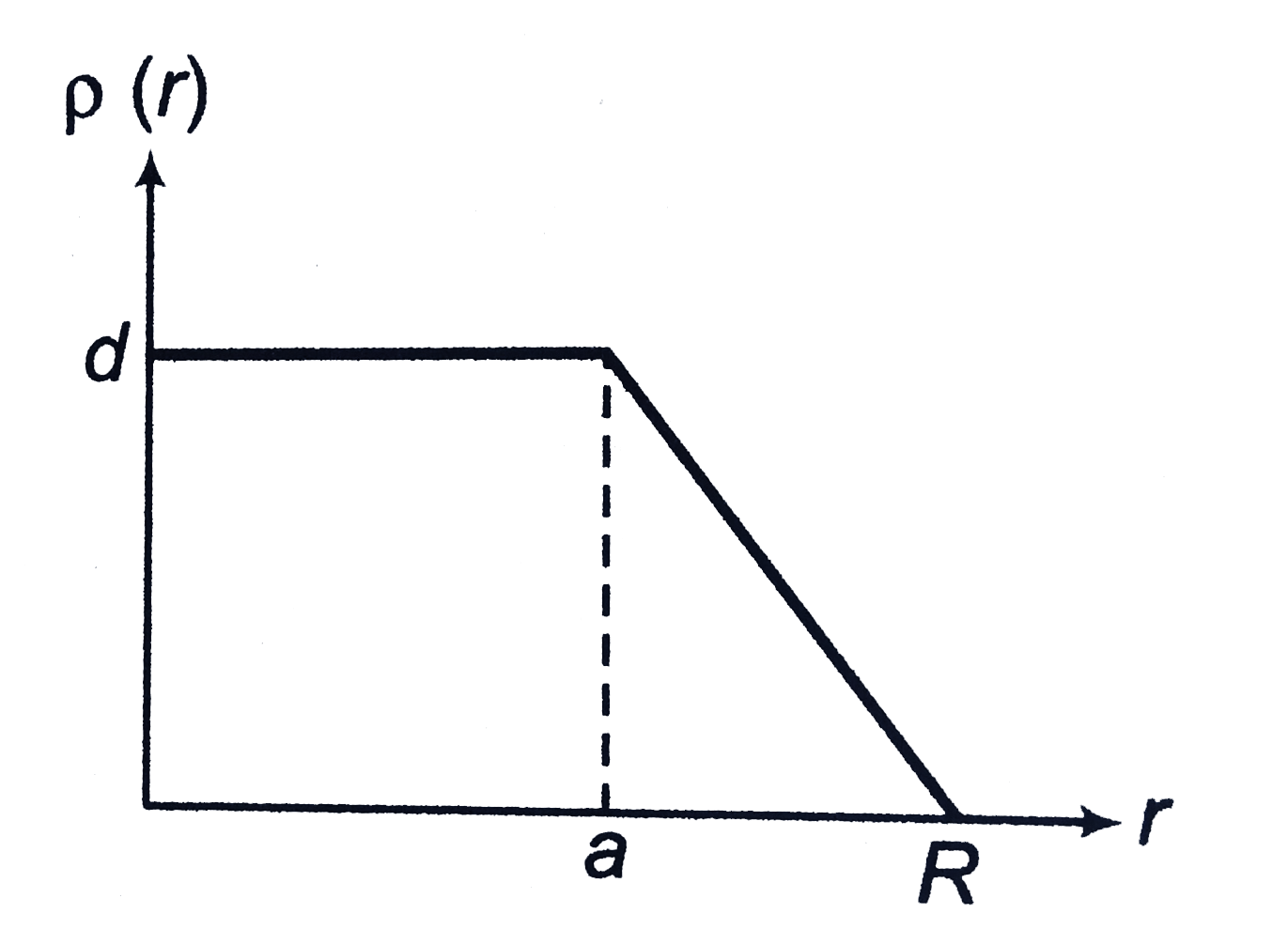
The electric field at r=R is
independent of a
directly proportional to a
directly proportional to a2
inversely proportional to a
Net charge within r<R is constant, hence , electric field is independent of a.
q=∫R0dR(R−x)4πx2dx=Ze
d=3ZeπR3
if within a phere ρ is constant then E∝r
Topper's Solved these Questions
- MISCELLANEOUS VOLUME 3BOOK - CENGAGE PHYSICS ENGLISHCHAPTER - MISCELLANEOUS VOLUME 3EXERCISE - Interger Answer type
20 Videos
- MISCELLANEOUS VOLUME 3BOOK - CENGAGE PHYSICS ENGLISHCHAPTER - MISCELLANEOUS VOLUME 3EXERCISE - Fill in the blanks
10 Videos
- MISCELLANEOUS VOLUME 3BOOK - CENGAGE PHYSICS ENGLISHCHAPTER - MISCELLANEOUS VOLUME 3EXERCISE - Assertion and Reason Type
8 Videos
- MAGNETIC FIELD AND MAGNETIC FORCESBOOK - CENGAGE PHYSICS ENGLISHCHAPTER - MAGNETIC FIELD AND MAGNETIC FORCESEXERCISE - Multiple Correct Answer type
2 Videos
- MISCELLANEOUS VOLUME 5BOOK - CENGAGE PHYSICS ENGLISHCHAPTER - MISCELLANEOUS VOLUME 5EXERCISE - Integer
11 Videos
Similar Questions
Two point charges q1=q2=2μC are fixed at x1=+3m and x2=−3m as shown in figure. A third particle of mass 1 g and charge q3=−4μC are released from rest at y=4.0m.Find the speed of the particle as it reaches the origin.
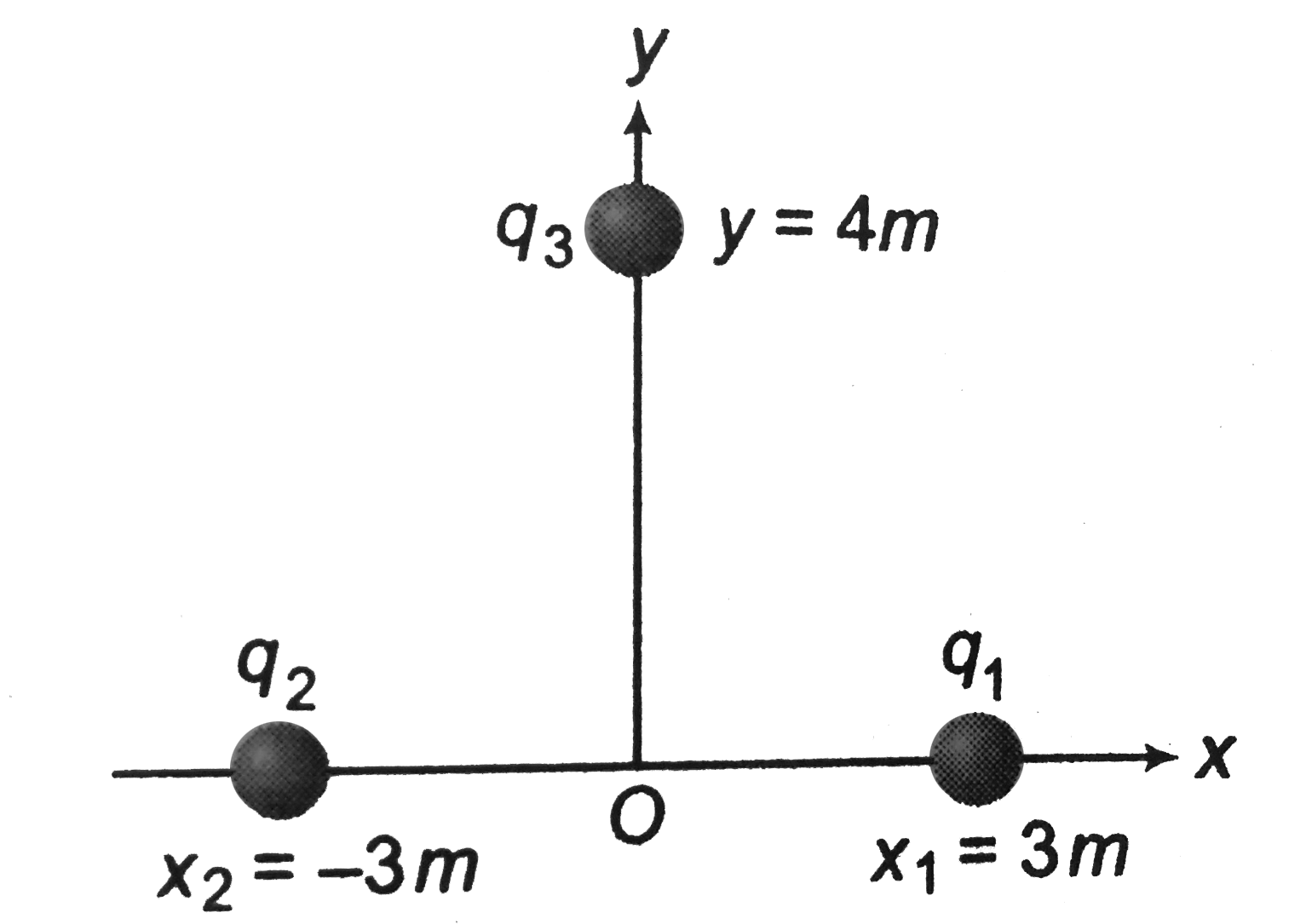
View SolutionFive identical capacitor paltes, each of area A, are arranged such that adjacent plates are at a distance d apart, the plates are connected to a source of emf V as shown in the figure
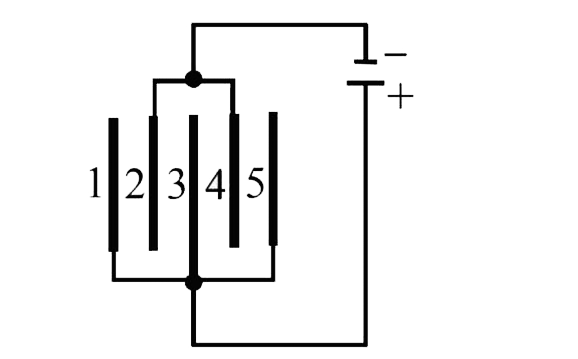
The charge on plate 1 is ………..and on plate 4 is.............
View SolutionStatement I: When air between the plates of a parallel plate condenser is replaced by an insulating dielectric medium, its capacity decreases.
Statement II: Electric field intensity between the plates with dielectric in between is reduced.
View SolutionWhich of the following statements is correct in the given figure?
Infinitely long wire at E kept perpendicular to paper carrying current inwards:

View SolutionA charged particle enters a uniform magnetic field with velocity v0=4m/s perpendicular to it, the length of magnetic field is x=(√32)R, where R is the radius of the circular path of the particle in the field. Find the magnitude of charge in velocity (in m/s) of the particle when it comes out of the field.
View SolutionThe nuclear charge ( Ze ) is non uniformlly distribute with in a nucleus of radius r. The charge density rho(r) (charge per unit volume) is dependent only on the radial distance r form the centre of the nucleus s shown in figure. The electric field is only along the radial direction. The electric field at r=R is
View SolutionThe nuclear charge (Ze) is non uniformly distributed within a nucleus of radius r. The charge density ρ(r) (charge per unit volume) is dependent only on the radial distance r form the centre of the nucleus as shown in figure. The electric field is only along the radial direction. For a=0 the value of d (maximum value of ρ as shown in the figure) is

View SolutionThe nuclear charge ( Ze ) is non uniformlly distribute with in a nucleus of radius r. The charge densilty rho(r) (charge per unit volume) is dependent only on the radial distance r form the centre of the nucleus s shown in figure. The electric field is only along the radial direction. The electric field within the nucleus is generaly observed to be linearly dependent on r. This implies
View SolutionA solid non-conduction cylinder of radius R is charge such that volume charge density is proporation to r where r is distance from axis. The electric field E at a distance r(r lt R) well depend on r as.
View Solutionनाभिकीय आवेश (Ze), R त्रिज्या वाले नाभिक के भीतर असमान रूप से वितरित रहता हैं। आवेश घनत्व p(r) (अर्थात् एकांक आयतन में आवेश की मात्रा) नाभिक के केन्द्र से त्रिज्य दूरी (r) पर ही निर्भर करता है। वैद्युत क्षेत्र त्रिज्य दिशा के अनुदिश है।
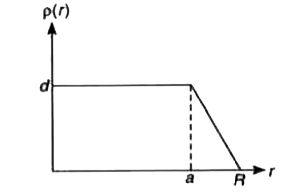
दूरी r= R पर वैघुत क्षेत्र है।
View Solutionनाभिकीय आवेश (Ze), R त्रिज्या वाले नाभिक के भीतर असमान रूप से वितरित रहता हैं। आवेश घनत्व p(r) (अर्थात् एकांक आयतन में आवेश की मात्रा) नाभिक के केन्द्र से त्रिज्य दूरी (r) पर ही निर्भर करता है। वैद्युत क्षेत्र त्रिज्य दिशा के अनुदिश है।
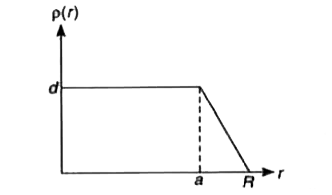
a= 0 के लिए d (p का अधिकतम मान) का मान है।
View Solutionकिसी R त्रिज्या के नाभिक में नाभिकीय आवेश (Ze) आसमान रूप से वितरित है। आवेश घनत्व ρ(r) का वितरण नाभिक के केंद्र से दूरी के फलन के रूप में चित्र में प्रदर्शित है। विद्युत क्षेत्र सिर्फ अरीय दिशा में उपस्थित है।
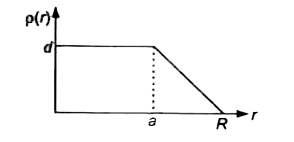
सामान्यतया नाभिक के अंदर विद्युत क्षेत्र का r के साथ रैखिक सम्बन्ध पाया जाता है। इससे प्रदर्शित है कि
View SolutionThe nuclear charge ( Ze ) is non uniformlly distribute with in a nucleus of radius r. The charge density rho(r) (charge per unit volume) is dependent only on the radial distance r form the centre of the nucleus s shown in figure. The electric field is only along the radial direction. The electric field at r=R is
View SolutionThe nuclear charge ( Ze ) is non uniformlly distribute with in a nucleus of radius r . The charge density rho(r) (charge per unit volume) is dependent only on the radial distance r form the centre of the nucleus s shown in figure. The electric field is only along the radial direction. For a=0 the value of d (maximum value of rho as shown in the figure) is
View SolutionThe nuclear charge ( Ze ) is non uniformlly distribute with in a nucleus of radius r. The charge densilty rho(r) (charge per unit volume) is dependent only on the radial distance r form the centre of the nucleus s shown in figure. The electric field is only along the radial direction. The electric field within the nucleus is generaly observed to be linearly dependent on r. This implies
View Solutionत्रिज्या R के एक नाभिक में नाभिकीय आवेश (Ze) असमान रूप से वितरित है चित्रानुसार, आवेश घनत्व ρ(r) [प्रति इकाई आयतन आवेश] नाभिक के केंद्र से त्रिज्यीय दूरी r पर निर्भर करता है विधुत क्षेत्र केवल त्रिज्यीय दिशा के अनुदिश है।
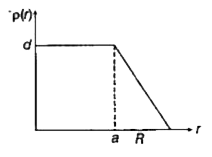
r=R पर विधुत क्षेत्र है
View Solution

